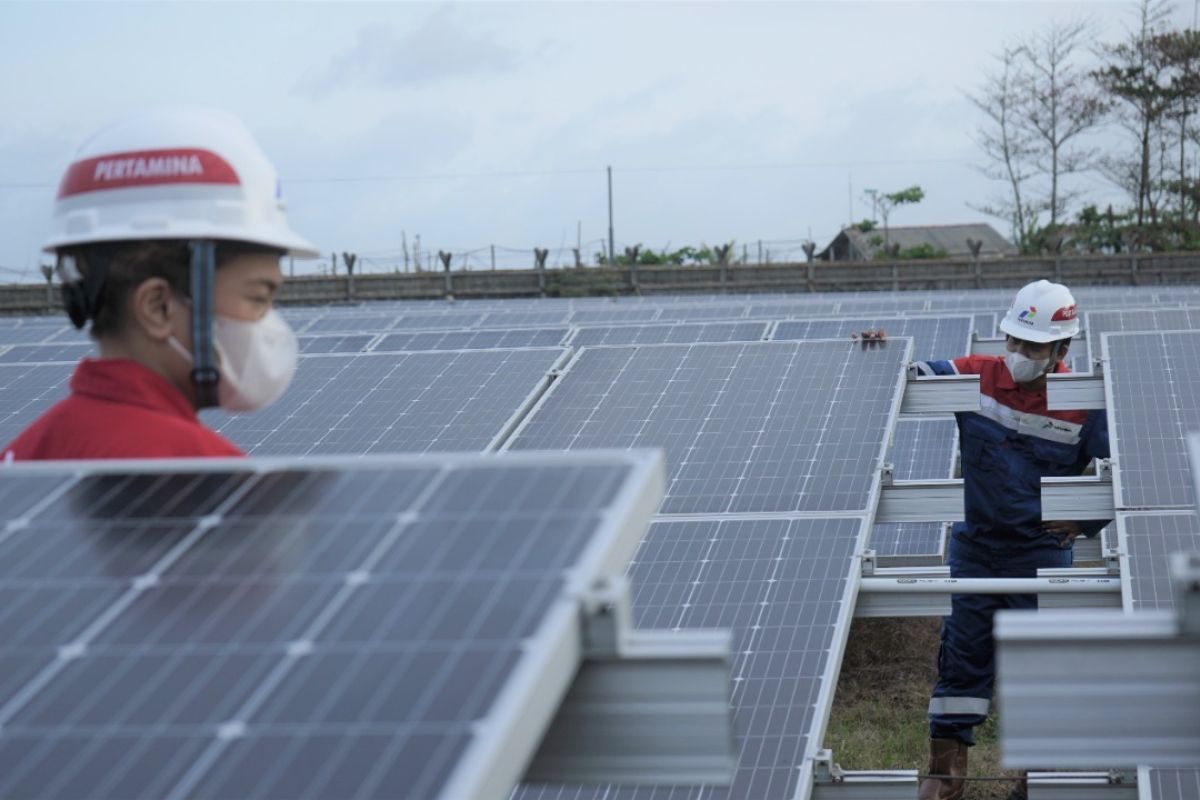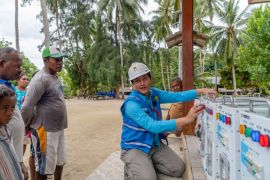For Southeast Asian countries that depend on the agriculture and livestock industries, slower progress in introducing and adopting EBT could bring a real challenge to their gross domestic product (GDP) growth in the long term.
In Southeast Asia, Indonesia has become the most promising country for EBT development, since it relatively has high economic growth compared to several other countries in the region.
Indonesia also has a great opportunity to encourage the development of EBT investment, even being included in the list of 40 promising countries for EBT investment.
Therefore, the application of EBT in Indonesia becomes one of the priorities in energy development, as stipulated in the National Energy Policy (KEN).
KEN aims to realize equal, sustainable, and environmentally friendly energy management in Indonesia to achieve energy independence and national energy security based on energy sovereignty and equitable economic values.
The energy transition to the EBT era in KEN and in the General National Energy Plan (RUEN) is realized through an increase in the percentage of the EBT mix from 11 percent in 2021 to 23 percent in 2025 and 31 percent in 2050.
The plan is in line with targets to reduce emissions under the Paris Agreement. Indonesia is targeting emission reductions of up to 29 percent on its own and up to 41 percent with international support by 2030, as described in its Nationally Determined Contribution (NDC).
On the other hand, the percentage of the fossil energy mix is projected to decrease even though the demand for fossil primary energy supply continues to increase.
Indonesia actually has abundant EBT potential, ranging from solar, hydro, bioenergy, wind, geothermal, and marine energy, as the capital of national energy security. However, only a few of them have been used.
A study from the Ministry of Energy and Mineral Resources (ESDM) reveals that the potential utilization of EBT in Indonesia is 417.8 GigaWatt (GW) from oceans with 17.9 GW, geothermal with 23.9 GW, and bioenergy with 32.6 GW.
Then, there is also the potential for renewable energy from wind power of 60.6 GW, hydropower of 75 GW, and solar power of 207.8 GW.
A study from World Bank shows that the energy transition will have a positive impact on Indonesia's gross domestic product (GDP), especially with more support from the private sector in its financing.
The energy transition proposed by the international institution can be carried out by Indonesia through two schemes.
The first scheme is reducing carbon emissions by up to 40 percent with the remaining installed capacity of Steam Power Plants (PLTU) of less than 5 GW by 2040 while the second scheme is related to a reduction in carbon emission of up to 70 percent with no more coal power plants.
By relying on private financing, domestic GDP can increase to 0.2 percent by implementing the first scheme and 0.3 percent with the second scheme.
Meanwhile, if the funding is carried out by the private sector and the public, GDP will only increase by 0.1 percent when implementing the first and second schemes.
EBT transition financing
In the development of EBT, there are several challenges that must be faced ranging from the potential of EBT spread across country, network limitations, the need for large base load or storage power plants, limited domestic industry capabilities, market uncertainty, EBR transportation, and decrease in energy consumption due to the pandemic.
The challenge of decarbonization in economic growth, which is stagnant at five percent annually, has also made it difficult to achieve the EBT target of 23 percent. Indonesia still also has a dependence on coal which is not in line with its greenhouse gas (GHG) emission reduction target.
However, the biggest challenge in EBT transition is related to financing. Initial investment costs, high bank interest, and the lack of bank’s interest to invest that tend to halt the financing process.
In addition, the process of energy transformation and clean energy technology is still expensive for developing countries.
The report on the Renewable Energy Investment Funding Mechanism by National Development Planning Agency (Bappenas) and the Global Green Growth Institute (GGGI) showed that Indonesia needed a budget of US$167 billion to push the use of EBT by 2025 and support the commitment to achieving the Nationally Determined Contribution (NDC) by 2030.
However, the cost of renewable energy is currently decreasing significantly worldwide, especially for solar PV, which is currently at its lowest point. This unprecedented phenomenon shows no indication for the cost increase in the near future.
Reducing technology costs, increasing capacity, and better procurement methodologies have played a key role in lowering project costs and making EBT becomes more affordable.
Therefore, Indonesia can prepare special funds supported by policies on EBT, similar to China, India, and Thailand.
EBT funds can be used for a variety of purposes, including building network infrastructure and offering more subsidies for development projects.
In addition, the Indonesian Government could impose a progressive electricity tariff structure to promote greater use of renewable energy. This step is able to provide more incentives and business convenience in grid integration, land acquisition, and alternative schemes for developers.
Indonesia can also offer a more appropriate feed-in-tariff (FIT) and relax the must-run status for all NRE power plants in the country.
Currently, green financing facilities are used as an alternative source of funding for low-carbon investments, including investment in the development and construction of NRE facilities.
The government has also launched green financing or green sukuk to mobilize international funding for climate projects in Indonesia. The Indonesian government has issued regulations on green sukuk in 2017.
Regional participation
State run electricity company PLN noted that electricity consumption growth outside Java Island increased to 11 percent, while infrastructure growth was less than six percent in 2021.
Due to this asymmetry, many regions in Indonesia are experiencing an energy crisis. The short-term solution to overcome this problem is to utilize the potential of local renewable energy sources.
EBT could play an important role in accelerating the increase in electricity capacity in those areas through the reduction of steam power plant since it brings a negative impact on the environment.
"This has become our concern to fulfill all supply needs from electrical energy, but not all of these EBT power plants generate electricity," Head of the Agency for the Assessment and Application of Technology (BPPT) Hammam Riza said.
The National Energy Council (DEN) also coordinates and provides guidance for local governments in formulating the General Provincial Energy Plan (RUED-P) to identify and maximize the use of EBT in each region.
To date, 23 provinces have completed the RUED Regional Regulation, while 11 other provinces are still in the process of drafting the RUED.
In terms of budget, the Ministry of Finance has also marked the budget (budget tagging) for climate change mitigation and adaptation so that local governments can support the achievement of climate change control targets.
Related news: Hope B20 will help G20 achieve net-zero emission target: Hartarto
Related news: Minister outlines strategies for meeting carbon neutral target by 2060
Editor: Rahmad Nasution
Copyright © ANTARA 2022












